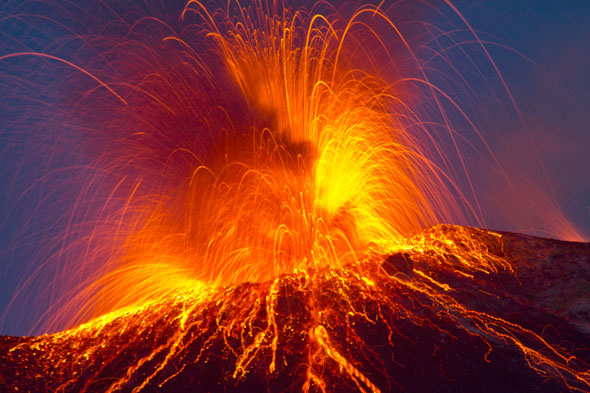THE LEGEND BEHIND HAWAII’S GODDESS OF FIRE

Lighting up ancient Hawaiian legends, Pele (pronounced peh-leh) the goddess of fire, lightning, wind, dance and volcanoes is a well-known character. Otherwise known as ka wahine ai honua, the woman who devours the land, Pele’s home is believed to be Halemaumau crater at the summit of Kilauea, one of the world’s most active volcanoes. However, all of Hawaii lays the setting for her stories, so that to this day, any volcanic eruption in Hawaii is attributed to Pele’s longing to be with her true love.
Pele is renowned for her passionate and fiery temperament and many people who visit the islands will hear stories of her power and destruction. One of six daughters and seven sons born to Haumea (an ancient Earth goddess) and Kane Milohai (the creator of the sky, earth and upper heavens), Pele’s siblings include Kane Milohai, Kamohoalii, Namaka as well as 13 sisters with the same name – Hiiaka.
Behind the Legend of Pele
There are as many versions of how Madame Pele came to Hawaii as there are lava rocks on Hawaii Island. One common legend says that Pele – who was born in Honua-Mea in Tahiti — was sent away by her father because of her difficult temper and for seducing her sister, Namakaokahai’s, husband. She found her way to the Hawaiian Islands where legend after legend bubbled up around her countless lovers, infidelities and feuds and heated outbursts.
Another well-known story spins a web that Pele’s older brother Kamohoalii (the king of sharks) provided Pele with a large canoe which she and her brothers took and sailed away with – eventually coming to Hawaii. When she made landfall in the islands it was on Kauai, where she was attacked by her sister Namakaokahai and left for dead. According to legend she was able to recover and escaped to Oahu where she dug fire pits, including the crater today called Diamond Head. She traveled through the island chain to Molokai and on to Maui where she is said to have made Haleakala volcano.
Upon discovering Pele had survived, Namakaokahai traveled to Maui and the two engaged in an epic battle near Hana, where Pele was torn apart by her sister and became a god, finding a home on Mauna Kea on Hawaii Island. There she dug her final fire pit, the Halemaumau Crater at the summit of Kilauea, where many believe she resides to this day.
And yet another tale tells that Pele was married for a short — and violent — time to Kamapuaa, the god of water. This story says that Pele rerouted Kamapuaa from their home in Helemaumau and angrily chased him, with rivers of lava, into the Pacific Ocean. This story is meant to symbolize the violent and explosive experience of a hydrovolcanic eruption, though Hawaiian eruptions are much more peaceful. Pele’s loyal followers believe that the frequent eruptions of lava on Kilauea is a reminder that Pele is alive and still at home here.

Pele Parables
Pele is often portrayed as a wanderer and sightings of the familiar and popular goddess have been reported throughout the island chain for hundreds of years, but especially near volcanic craters and near her home of Kilauea, one of the most active volcanoes in the world.
In these sightings or visions she appears as either a very tall, beautiful young woman or an unattractive and frail elderly woman usually accompanies by a white dog. Those well-versed in the legend, say that Pele takes this form of an elderly beggar woman to test people – asking them if they have food or drink to share. Those who are generous and share with her are rewarded while anyone who is greedy or unkind are punished with their homes or other valuables destroyed.
The Goddess of Volcanoes
If you visit Hawaii only once, the one myth of Pele that you will likely hear and should take heed of is one surrounding the curses she inflicts on those who remove lava rocks from her island home. While many — including some kamaaina (local residents) believe that it is only legend, to this day thousands of pieces of lava rock are mailed back to the island from travelers over the world who insist they’ve suffered bad luck and misfortunes as a result.
